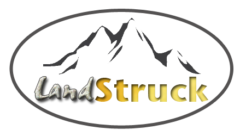In recent years, the soaring costs of urban living have driven many people to reconsider their lifestyle choices. The allure of the bustling city is often overshadowed by skyrocketing rent prices, exorbitant utility bills, and the stress of constant hustle. On the other hand, off-grid country living offers an affordable and fulfilling alternative, enabling individuals and families to achieve financial freedom, self-sufficiency, and a closer connection to nature. This article explores the benefits of transitioning from expensive town living to off-grid country living, highlighting the financial advantages and the possibilities for scaling up to a comfortable, sustainable lifestyle.
The Cost of Urban Living vs. Off-Grid Living
The financial burden of living in town can be overwhelming. According to recent data, the average monthly rent for an apartment in the U.S. is approximately $1,300, with major cities like New York and San Francisco seeing much higher rates. Additionally, the average utility bill, including electricity, water, and heating, can add another $200 to $300 per month. This brings the total monthly cost of living in a typical urban apartment to around $1,500 to $1,600.
In stark contrast, transitioning to off-grid country living offers a much more affordable lifestyle. Imagine owning a piece of land with a payment of just $400 per month and a modest RV with a payment of $350 per month. Your total monthly housing cost would be $750—a fraction of what you would pay for rent and utilities in town. The remaining money could be invested in creating a self-sufficient, sustainable lifestyle.
Starting with the Bare Necessities
Transitioning to off-grid living doesn’t mean sacrificing comfort or modern amenities. It does, however, require a shift in priorities and a willingness to start with the basics. Here’s how you can begin:
1. Land and Shelter: Start by purchasing a small piece of land in a rural area. Owner-financed options make this accessible without the need for a large upfront payment. Begin with an RV or a small cabin as your primary shelter. These are affordable and can provide all the basic necessities.
2. Basic Utilities: Instead of relying on municipal services, you can start with basic off-grid utilities. A simple solar power system can provide electricity for lights, small appliances, and communication devices. A propane tank can serve as a source of heat and cooking fuel. A water collection system, such as a rainwater catchment system, can provide your water needs.
Scaling Up: Building a Comfortable Off-Grid Lifestyle
As you save money by living off-grid, you can gradually scale up your amenities and create a comfortable, modern lifestyle. Here’s how you can reinvest your savings:
1. Solar Power Expansion: Instead of paying a utility company, you can use the money saved from utility bills to expand your solar power system. Over time, you can increase your solar panel array, add battery storage, and power larger appliances such as a refrigerator, washing machine, and air conditioning.
2. Water Collection and Filtration: Expand your water collection system by adding more storage tanks and a high-quality filtration system. This will ensure a reliable and clean water supply for all your needs, from drinking to irrigation.
3. Home Improvement: As your savings grow, you can invest in improving your shelter. Upgrade from an RV to a tiny home or a small off-grid cabin. Incorporate sustainable building materials and design elements that enhance energy efficiency and comfort.
4. Gardening and Livestock: To further reduce your living expenses and increase your self-sufficiency, start a garden or raise small livestock. Growing your own food can significantly cut down on grocery bills and provide fresh, organic produce.
Financial Freedom and Beyond
The financial benefits of off-grid living go beyond the immediate savings on rent and utilities. By eliminating monthly bills and investing in self-sustaining systems, you can achieve long-term financial freedom. Imagine no longer being tied to a 9-to-5 job just to cover your living expenses. Instead, you could pursue passions, spend more time with family, or even start a small business.
Additionally, off-grid living fosters a deep sense of independence and resilience. You become less reliant on external systems and more capable of providing for your own needs. This lifestyle also encourages a closer connection to nature, a simpler, more intentional way of living, and a stronger sense of community with like-minded individuals.
Conclusion
Transitioning from expensive town living to affordable, off-grid country living is not just a financial decision—it’s a lifestyle choice that offers a path to greater freedom, self-sufficiency, and fulfillment. By starting with the basics and gradually scaling up, anyone can build a comfortable and sustainable off-grid lifestyle that rivals traditional urban living. The money saved from rent and utilities can be reinvested into creating a home powered by the sun, sustained by natural resources, and free from the burdens of modern consumerism. Embrace the possibilities of off-grid living and take the first step toward a more affordable, fulfilling, and independent future.


